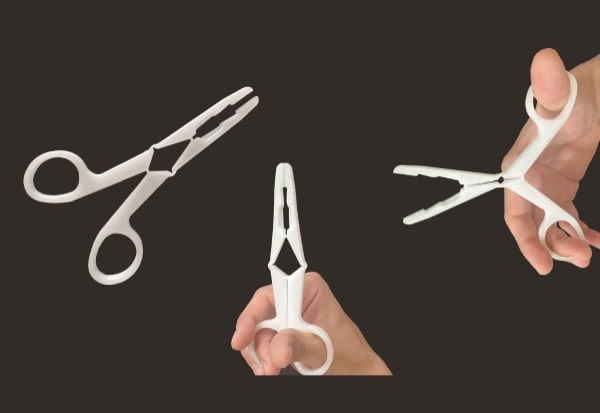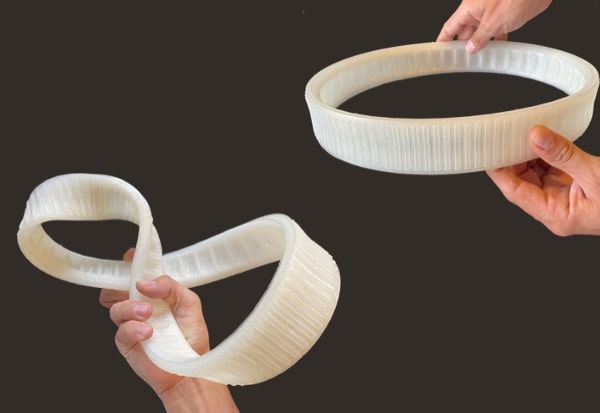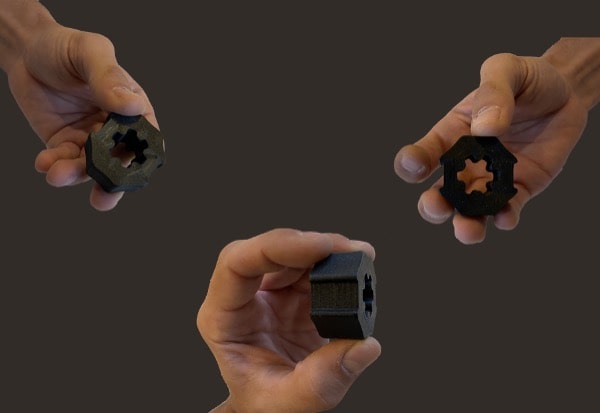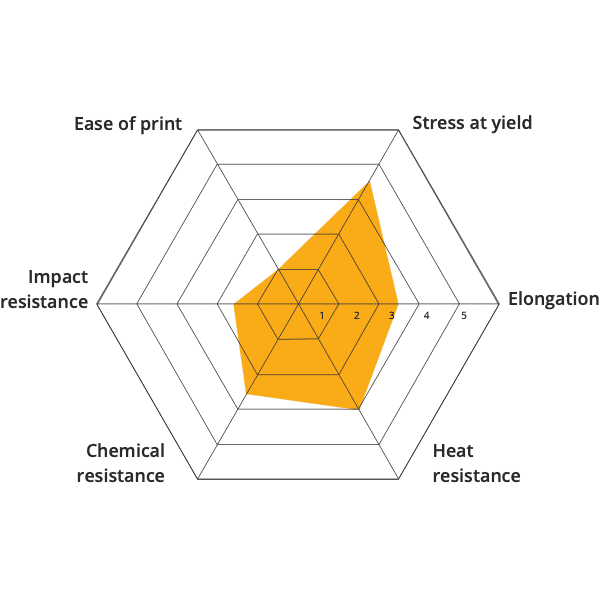
POM - Polyoxymethylene
Polyoxymethylene (POM) can withstand high mechanical constrains. POM is rigid, creep resistant and resists various stresses without deforming. It has a low-friction coefficient, which gives it a good resistance to wear.
POM is commonly used for gears, shock components, friction components, electrical and electronic industry.
Main 3D printing parameters
| Advised nozzles | Brass 0.25 | 0.4 | 0.6 | 0.8 | 1.0 | 1.2 mm |
| Printing temperatures | 180 - 230°C |
| Buildplate substrate | Micro-perforated buildplate |
| Builplate temperature | 80 - 110°C |
Let’s dive into the possibilities offered by PAM
From pellets to object, PAM technology offers the most direct process to high performances end-parts.
Metals Ceramics Commodity Elastomers Performance High Performance.












